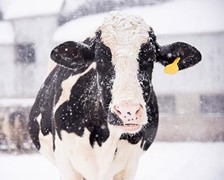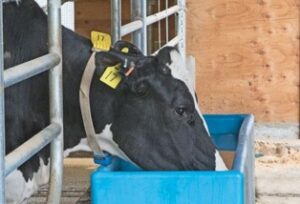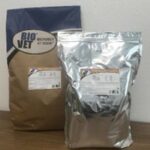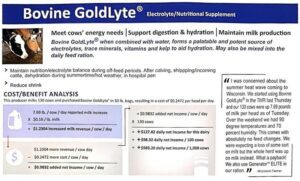Winter has arrived and as the colder temperatures have set in, Winter Dysentery may be affecting the herd. Winter Dysentery is a highly contagious GI disorder that affects adult dairy cattle primarily during winter. Current research indicates that it is caused by a particular strain of Coronavirus that attacks the intestinal lignin of adult dairy cattle. Winter Dysentery is typically spread through fecal-oral transmission, but viral particles present in respiratory secretions of affected animals may further enhance transmission. This disease can spread through an entire herd within 7 to 10 days. Winter Dysentery in cows is rarely fatal, and most animals will recover in a week.
Clinical Signs of Winter Dysentery:
- Severe, watery, foul-smelling dark green to black diarrhea and may contain
- Some mild coughing, nasal discharge, and general dehydration
- Diarrhea may be explosive
- Usually seen in one or two more cattle at first, but spreads rapidly, with most older cattle being affected within two weeks
- Decrease in feed intake
- Milk yield may be reduced by 50%
- Usually lasts two to three days, or up to a week
The best way to diagnose Winter Dysentery is to watch for the clinical signs. However, the clinical signs are also the signs of poisoning or feed problems. The way to tell the difference is if its rapidly spreading and no death, then it is most likely Winter Dysentery. There is no effective treatment, but its very important to make sure there is plenty of fresh, clean water to help with dehydration. Electrolytes are also a great solution to help dehydrated cattle.
Treatment is minimal, but there are many prevention tips to help keep Winter Dysentery away from your herd. One way to prevent Winter Dysentery is to ensure that staff are clean prior to entry. The disease could be brought on the farm by outside personnel, such as veterinarians, consultants, hoof trimmers, and representatives. Sanitize boots and clothing after working with animals to reduce the risk of spreading disease. Bringing in new cattle can also bring in the disease. You should separate the new cattle for a short quarantine to make sure they don’t have Winter Dysentery before introducing them to the herd. If an outbreak occurs, no cattle or unnecessary personnel should enter the farm and strict disinfection should occur before anybody leaves the farm. After an outbreak, herd immunity tends to reduce the risk of another outbreak for about five years.
Make sure cows have plenty of fresh, clean water. When cows have Winter Dysentery it is very important to provide access to freshwater; especially when cows are battling dehydration from diarrhea. There is no treatment or cure for Winter Dysentery, but you can help fix their dehydration from this infectious disease. The best way to keep on top of cattle being dehydrated from Winter Dysentery is to use an electrolyte nutritional supplement. Bovine GoldLyte is a nutritional supplement for dehydrated cattle due to shipping, hot weather, or in this case Winter Dysentery. Bovine GoldLyte helps maintain electrolyte balance and replace the salts cattle lose when dehydrated. When combined with water, Bovine GoldLyte is a potent source of electrolytes, chelated trace minerals, and kelp, which together aid in hydration and immune function. Bovine GoldLyte can be added to the drinking tank daily. Mix 0.25 pound (1 scoop) electrolyte powder with 5 gallons of water. Bovine GoldLyte can also be used as a routine supplement after calving. Bovine GoldLyte also has an organic option called ‘O’ Bovine GoldLyte. ‘O’ Bovine GoldLyte has all microbial and enzyme sources that are naturally occurring (non- GMO).





